- About
- Moving Services
- Antiques
- Art & Uniques
- Cross Country Moves
- Estate Moves
- Full Service Moves
- Long Distance Moves
- Los Angeles Moves
- Moves Within California
- Packing Crating Services
- Pianos
- Residential Moves
- Small Moves
- West Coast Moves
- Storage
- Freight / Shipping
- Tips & Tools
- Blog
- FAQ
- Movers Glossary
- Moving Brochure
- Moving Checklist
- Moving Tips
- Rights and Responsibilities
- Ready to Move Brochure
- Reviews
- Discounts
- Get Quote
- Now Hiring
- Contact
- Accessibility

We have earned the service industry’s coveted Angie’s List Super Service Award, reflecting an exemplary year of service provided to members of the local services marketplace and consumer review site in 2016.
Understanding Your Moving Quote

When you receive a moving quote, it typically outlines the expected costs based on distance, item weight, and requested services. This quote acts as a roadmap for your moving expenses, detailing the various fees you’ll encounter. Labor costs usually include packing, loading, transporting, unloading, and unpacking your belongings. Additionally, transportation services cover the expenses related to moving items, such as fuel and mileage, and these charges can vary based on the distance of the move.
However, not all moving companies calculate costs in the same manner. Each company has its own method for determining charges, which can lead to significant variations in quotes. For instance, some might focus heavily on the weight of your shipment, while others might emphasize the distance of the move or the type of service you choose. Understanding these differences is crucial to making an informed decision.
Factors such as the size and weight of your shipment, the distance of the move, and whether you need additional services like packing or storage can all influence the final cost. Being aware of these elements helps ensure that you are not caught off guard by unexpected charges.
What Services Are Typically Included?>
A full-service move generally covers packing, loading, transportation, unloading, and reassembling furniture. This means that the movers will handle everything from start to finish, allowing you to focus on settling into your new home. Additionally, full-service moves often include the standard placement of goods in your new home and the disposal of packing materials.
Movers employ different protective techniques to ensure your furniture is safe during transit. These methods include moving blankets, stretch wrap, padding, packing paper, bubble wrap, and cardboard. These materials are designed to prevent damage and ensure that your items arrive in the same condition they left.
Unpacking the Fine Print
Understanding the terms of your moving contract is essential to avoid unexpected charges. Many moving companies provide detailed information on tariffs and offer copies upon request. These tariffs can cover various aspects of your move, including cancellations, inventory changes, and disruptions due to weather.
It’s important to note that if a high-value item is not listed on your high value inventory form, the mover’s liability for that item may be significantly reduced. The maximum liability is determined based on the declared value of shipments, distinguishing between different valuation options and their associated limits of coverage for items, especially those of extraordinary value. This means that being meticulous about your inventory can save you a lot of headaches and potential losses. Always review the inventory form carefully and ensure all valuable items are listed.
Factors That Impact Your Moving Costs
When it comes to moving, several factors can significantly impact the overall cost of your relocation. Understanding these elements can help you better prepare and avoid unexpected expenses. Here are some key factors to consider:
- Weight and Volume: The weight and volume of your household goods are two of the most significant factors affecting your moving costs. Heavier and bulkier items require more resources to transport, leading to higher costs. It’s essential to declutter and only move what you truly need to minimize these expenses.
- Distance: The distance of your move plays a crucial role in determining the cost. Local moves are generally less expensive than long-distance relocations, which require more fuel, labor, and equipment. If you’re moving long distance, be prepared for higher costs due to the increased logistical demands.
- Type of Move: The type of move you choose can also impact your costs. A full-service move, where the moving company handles packing, loading, and unloading, will typically cost more than a self-service move, where you manage most tasks yourself. Consider your budget and the level of assistance you need when selecting the type of move.
- Additional Services: If you require extra services such as packing, storage, or handling specialty items, these will add to your overall moving costs. It’s important to discuss these needs with your moving company upfront to get an accurate estimate.
- Insurance: The level of insurance coverage you choose can also affect your moving costs. While it may seem like an added expense, insurance provides peace of mind and protects your belongings against loss or damage. Evaluate the different coverage options to find the best fit for your needs and budget.
By understanding these factors, you can better plan and budget for your move, ensuring a smoother and more cost-effective relocation experience.
Unloading Services: What's Covered?

Unloading services can sometimes be a separate component offered by moving companies. Some movers provide labor-only unloading services, allowing you to rent your own truck while still benefiting from professional help. This flexibility can be particularly useful if you prefer to handle some parts of the move yourself.
For those who need assistance with both loading and unloading, options like ‘Carry Crew’ can be a lifesaver. These services involve movers assisting with the heavy lifting, whether you’re using rented trucks or storage containers. Understanding what’s covered in unloading services can help you choose the right option for your needs.
Moving Company Unloading Services
Unloading services involve the careful handling and placement of items into your new home as part of the moving process. Professional moving teams are trained to handle your belongings with care, ensuring they are unloaded and placed in the correct rooms. This attention to detail helps prevent damage and ensures an efficient moving process.
Carrying articles excessive distances may be part of the unloading process, especially if there are accessibility challenges at the new location. Movers typically provide assistance by the hour, allowing you to decide how much help you need during the unloading process. This flexibility can be especially useful if you have specific requirements or a tight budget.
Factors Impacting Unloading Costs
The efficiency of the unloading process can significantly impact the overall cost. Typically, a moving crew consists of 2-3 people, and the more movers available, the faster the process will be. However, this also means higher costs, as moving companies often charge by the hour.
Cost structures for unloading can vary depending on whether the service is provided hourly or as part of a full moving package. Factors like the distance from the truck to your home or obstacles such as stairs can also affect unloading time and, consequently, the overall cost. Being aware of these factors allows you to plan and budget more effectively.
Carrying Articles Excessive Distances
Carrying articles excessive distances is a common challenge in the moving industry, especially when navigating tight spaces or uneven terrain. To address this issue, professional movers use specialized equipment such as dollies and hand trucks to maneuver heavy or bulky items safely. Additionally, they employ padding and wrapping materials to protect your belongings from damage during transit.
In some cases, movers may charge an additional fee for carrying articles excessive distances, particularly if it requires extra labor or equipment. This fee is typically included in the overall moving estimate and ensures that your belongings are handled with the utmost care and attention. By understanding this aspect of the moving process, you can better prepare for any additional costs and ensure a smooth transition to your new home.
Common Additional Costs
Additional services may incur extra charges and often require full payment at pickup or delivery. These services can include packing, assembling, or disassembling furniture and storage options, along with additional services performed. Transportation services, which cover the logistics of moving your belongings, can also vary in charges based on the distance of the move. It’s essential to be aware of these potential costs to avoid surprises when you receive the final bill.
Storage charges are another aspect to consider. If you need to store your belongings temporarily, including storage in transit and storage services, you will be responsible for these charges. Understanding all possible additional costs can help you manage your moving budget more effectively.
Special Services and Fees
Special handling services may include disassembling and reassembling items, moving pianos, and other detailed services. Movers may charge additional fees for reassembling furniture after unloading. These services ensure that your items are set up correctly in your new home, but they do come at an extra cost.
Packing materials and services, such as boxes, bubble wrap, and packing tape, are typically charged separately from the overall moving cost. Being prepared for these additional fees can help you budget more accurately for your move.
Hidden Costs of Moving: Unloading
Hidden costs can significantly affect your moving budget. Long carry and long push charges are extra fees incurred when movers transport items over extended distances from the vehicle to the destination. Stair fees may also apply if movers have to carry items up or down stairs during unloading.
Depending on the building's policies, using elevators can result in additional charges. Parking permits for moving trucks, if not arranged in advance, can also lead to extra costs.
Being aware of these hidden costs helps you create a more accurate moving budget and prevents unexpected financial surprises.
Moving Company Responsibilities and Liability

Moving companies have a range of responsibilities and liabilities regarding the handling of household goods. Understanding these aspects is crucial to ensuring the protection of your belongings throughout the moving process.
What is a Moving Company’s Liability?
A moving company’s liability refers to their responsibility for any loss or damage that occurs to your belongings during transit. Moving companies are required by law to assume liability for the value of the goods they transport, and they typically offer different levels of liability coverage to their customers:
- Released Value Liability: This is the most basic level of liability coverage, providing minimal protection for your belongings. Under this option, the moving company assumes liability for no more than 60 cents per pound per article. While this option is cost-effective, it offers limited compensation in case of loss or damage.
- Declared Value Liability: This option provides more comprehensive coverage, where the moving company assumes liability for the declared value of your shipment. The declared value is usually based on the total weight of your shipment multiplied by a predetermined value per pound. This level of coverage offers better protection than released value liability.
- Full Value Protection: This is the most comprehensive level of liability coverage, providing full protection for your belongings against loss or damage. Under this option, the moving company assumes liability for the current market replacement value of your shipment. This means that in the event of loss or damage, the mover will repair, replace, or offer a cash settlement for the affected items.
It’s essential to understand the different levels of liability coverage offered by moving companies and choose the option that best suits your needs and budget. By doing so, you can ensure that your belongings are protected and have peace of mind during your move.
How to Ensure Accurate Estimates
Scheduling an in-home estimate with a professional estimator is crucial for getting an accurate moving quote. The estimator can evaluate the amount of work required for the move during this visit. They will then provide a precise price quote. An accurate estimate helps you plan your budget and avoid unforeseen expenses.
An in-home estimate involves a visual survey of the items to be moved, ensuring that all goods are accounted for. This thorough assessment is essential for determining the weight of your household belongings and providing an accurate moving estimate.
Requesting a Detailed Descriptive List and High-Value Inventory Form
Movers may provide either binding or non-binding estimates that specify costs based on requested services. To ensure accuracy, it’s important to request a comprehensive visual inventory of items to be moved. This helps in creating a detailed descriptive list, ensuring all goods are accounted for.
Inquiring about long carry charges and other potential additional fees can help avoid unexpected costs during the move. Being proactive in requesting detailed information from your mover can save you from surprises on the final bill.
In-Home Estimate vs. Online Quotes: Understanding a Binding Estimate
In-home estimates generally provide a more precise evaluation compared to online quotes. These estimates allow for a thorough assessment of items and conditions, ensuring a clear understanding of moving costs. Online quotes, on the other hand, may lack detail and lead to less accurate cost projections.
Scheduling an in-home estimate helps avoid unforeseen expenses by providing a comprehensive overview of what the move will entail. This clarity is essential for effective budgeting and planning.
Questions to Ask Your Moving Company
Asking the right questions can make a significant difference in your moving experience. Start by verifying if the quoted price covers unloading services. Clarifying this detail helps set clear expectations and prevents unexpected charges on your final bill.
Understanding how moving companies charge for their services and what’s included in the quote is crucial. Maximum liability refers to the financial limits placed on moving companies regarding the loss or damage of goods during transit, determined based on the declared value of shipments and different valuation options, especially for items of extraordinary value. This knowledge allows you to compare different companies and choose the one that best suits your needs.
Verifying Unloading Inclusion
Clarifying if the quoted price covers unloading services helps set clear expectations from the start. Ask your moving company directly if unloading services are part of the quoted price. Not confirming this detail can lead to unexpected charges on your final bill.
Addressing unloading service details beforehand can enhance the overall experience and prevent last-minute surprises. This proactive approach ensures a smoother moving day.
Understanding the Final Bill
A bill of lading is a contract that ensures your goods are picked up, transported, and received at the final destination. Before signing, you must declare a declared value for your shipment, which affects the mover’s liability in case of loss or damage. It’s crucial to read the bill of lading carefully and understand your responsibilities before accepting it.
Review the final bill to ensure all services and charges are clearly itemized. A binding estimate covers only the goods and services listed on the estimate. The maximum liability is determined based on the declared value of your shipment, with different valuation options setting various limits of coverage, especially for items of extraordinary value. If any items are found to be missing or damaged, make a note and start the claims process as soon as possible.
Movers typically offer options for addressing lost or damaged items, such as repair, replacement with a similar item, or a cash settlement. In these situations, the mover assumes liability.
Tips for a Smooth Unloading Day
Preparing for unloading day can help ensure a smooth and efficient process. Start by decluttering and ensuring clear pathways in your new home. This preparation makes it easier for the movers to navigate and place your items where they belong.
Communicate with the moving crew about their arrival time to ensure everyone is coordinated.
Preparing Your New Home
Clean your new home and clear pathways to ensure the movers can work efficiently. In larger metropolitan areas, ensure a moving permit is acquired if needed.
Label specific areas in your new home for where each box should be placed to assist the movers. Go through your moving inventory on delivery day to determine where to place items. Check off items from your inventory list upon the arrival of the movers to confirm all items are present.
Notify your neighbors about the moving truck so they may assist by moving their cars or clearing paths.
Coordinating with the Moving Crew
Provide clear instructions to the movers about where to place large furniture items in your new home. Establish a point of contact among your family or friends to help relay information to the moving crew. Effective communication with your moving crew is crucial for ensuring a smooth unloading process.
Utilizing clear instructions and a communication point ensures efficient unloading and proper placement of household goods.
Summary
Understanding every detail of your moving quote is essential to avoid unexpected costs and ensure a smooth moving experience. Maximum liability, which refers to the financial limits placed on moving companies regarding the loss or damage of goods during transit, is a crucial aspect to consider. From knowing what’s included in the quote to uncovering hidden costs, being informed helps you manage your expectations and budget effectively. Charges associated with transportation services, which can vary based on the distance of the move, are also important to understand.
Verifying if unloading services are included and understanding the final bill can save you from last-minute surprises.
By preparing your new home and coordinating with the moving crew, you can make the unloading process efficient and stress-free. Remember to ask the right questions and schedule an in-home estimate to get the most accurate quote possible. With these tips and insights, you’re well on your way to a successful move.












